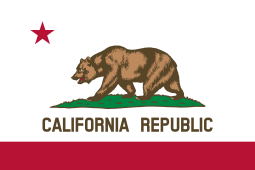San Francisco Belt Railroad

The San Francisco Belt Railroad was a short-line railroad along the Embarcadero in San Francisco, California. It began as the State Belt Railroad in 1889, and was renamed when the city bought the Port of San Francisco in 1969. As a state owned enterprise, the railroad asserted several unsuccessful claims to immunity from federal regulation.[1] The railroad ceased operation in 1993.[2]
The railroad connected the Port of San Francisco to many waterfront docks and to industries and warehouses which were adjacent to the waterfront. In its early years it operated dual-gauged track to accommodate the North Pacific Coast and South Pacific Coast Railroads.[3] It would eventually have 67 miles (108 km) of trackage and general offices in the Ferry Building. Its function was to switch railroad cars from four major railroads to points along its system and vice versa. At the southern portion of the line, a track along King Street (passing the location now occupied by AT&T Park) connected with the Southern Pacific. San Francisco Municipal Railway's "E" Embarcadero line now traverses this route. A train ferry slip at Pier 43 allowed interchange with the Northwestern Pacific, the Western Pacific, and the Atchison, Topeka & Santa Fe railroads. To reach its northern terminus in the Presidio, the line passed through Fisherman's Wharf, Aquatic Park, and Fort Mason Tunnel.
The San Francisco Bay Railroad has operated the port terminal line since 2000.
Locomotives
During its years of operation the railroad had 12 steam locomotives and 6 ALCO diesel engines:[4]
| Number | Arrangement | Year, Builder | Number | Arrangement | Year, Builder | Number | Model | Year, Builder | ||
|---|---|---|---|---|---|---|---|---|---|---|
| Governor Markham | 2-4-2T | 1891, Baldwin | Number 7 | 0-6-0 | 1914, Alco-Brooks | Number 20 | S2 | Alco | ||
| Number 2 | 0-4-2T | 1901, Baldwin | Number 8 | 0-6-0 | 1916 | Number 21 | S2 | Alco | ||
| Number 3 | 0-4-2T | 1904, Baldwin | Number 9 | 0-6-0 | 1920, Alco-Brooks | Number 22 | S2 | 1944, Alco | ||
| Number 4 | 0-6-0 | Number 10 | 0-6-0 | 1923, Baldwin | Number 23 | S2 | 1944, Alco | |||
| Number 5 | Number 11 | 0-6-0 | 1927 | Number 24 | S2 | 1945, Alco | ||||
| Number 6 | 0-6-0 | 1913, Baldwin | Number 12 | Number 25 | S2 | Alco |
Over the years, the belt railroad's tracks hosted several noteworthy locomotives and trains. In 1949, the California Zephyr was positioned near the Ferry Building for its inaugural ceremony. In 1971, the Flying Scotsman concluded its American tour by shuttling back and forth on a stretch of track adjacent to the Embarcadero and near Fisherman's Wharf. Owner Alan Peglar ran out of funds and the locomotive spent most of 1972 stored at an army base in Stockton, California. In 1975, the American Freedom Train pulled by ex-Southern Pacific Daylight locomotive #4449 visited San Francisco. For public viewing, the train's cars were switched to the Presidio by the belt line. The locomotive itself remained on display at Aquatic Park near the foot of Hyde Street. In 1987, the tracks along the Embarcadero just south of Sansome Street hosted a rail fair. Diesel locomotives and steam locomotives including V&T's J.W. Bowker (2-4-0 locomotive) were on display.
Steam Locomotive Number Four
Currently Locomotive #4 is being restored by the San Francisco Trains group, with larger plans to change the old Bayshore Roundhouse, originally owned by Southern Pacific, to a historic community destination. Due to work on the Roundhouse, it has been listed on the National Register of Historic Places.
See also
- Fred E. Stewart, former superintendent
References
- ↑ See e.g. California v. Taylor, 353 U.S. 553, 1 L. Ed. 2d 1034, 77 S. Ct. 1037 (1957).
- ↑ "The State Belt Railroad – Switching freight on San Francisco's Embarcadero". Golden Gate Railroad Museum. Retrieved 22 Dec 2012.
- ↑ Harrison, Greg. "The San Francisco Belt Railroad". AbandonedRails.com. Retrieved 22 December 2012.
- ↑ "The State Belt Railroad of California". Retrieved 22 December 2012.
